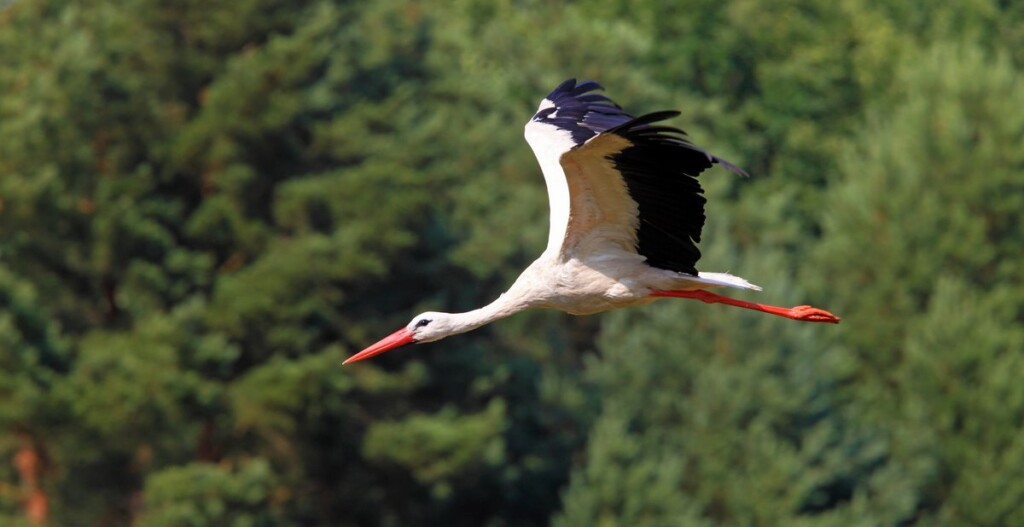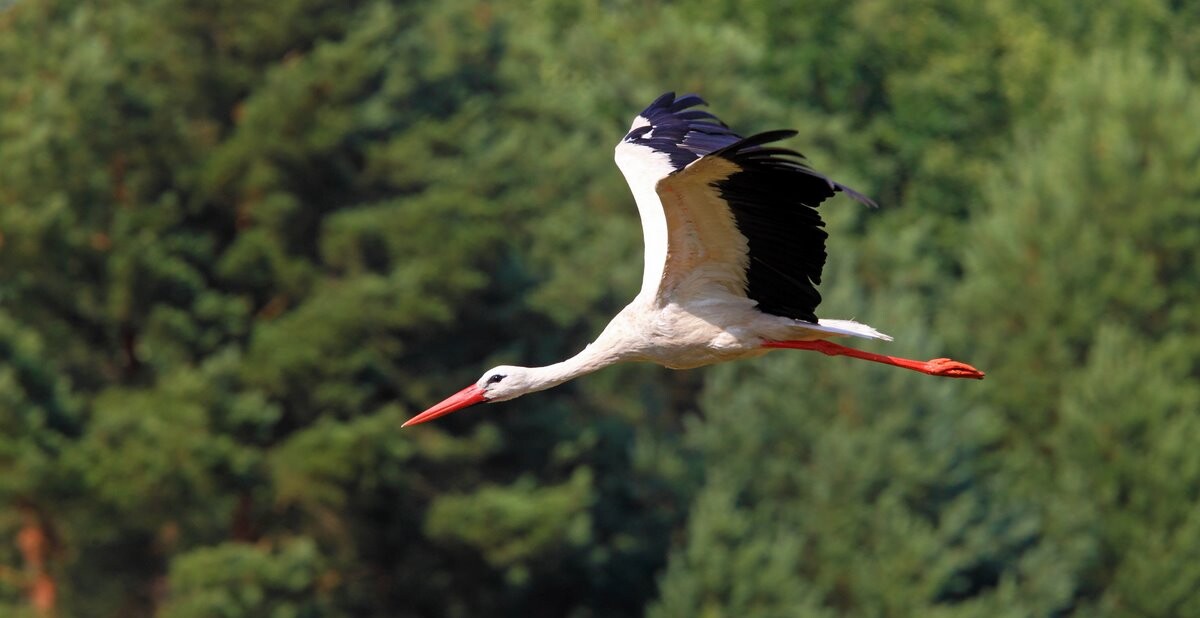
Wine is typically the first example in an analogy about something that gets better with age, but scientists suggest that birds are just as good.
That’s because migratory birds learn from previous experiences to shorten their annual journeys as they get older, reveals a new study about the very mysterious behavior of avian migration
Researchers observing white storks in Germany and Austria found the clever birds plot more direct routes and even develop shortcuts as they age, whilst younger birds take more time to explore.
The study, from scientists at the University of Wyoming (UW) in the US and the Max Planck Institute of Animal Behaviour in Germany, suggests experimental learning is an important aspect of successful migration.
Whilst genetics and social behavior are important factors in shaping animal migrations, information gained through individual experience also appears to help.
The fascinating new migration study, published in the journal Proceedings of the National Academy of Sciences, involved the technically sophisticated tracking of more than 250 white storks spread across five breeding areas in southern Germany and Austria between 2013 and 2020.
The tracking data not only pinpointed the migration pathways of the storks but also measured the timing and pace of individual storks, as well as estimating the amount of energy the storks used while flying.
The research team, which also involved researchers from the University of Konstanz in Germany, found that young storks tended to take their time exploring new places during migration.
However, they also noticed the birds’ migrations become increasingly shorter as they age.
“As the birds age and gain more experience, older individuals stop exploring new places and instead move more quickly and directly, resulting in greater energy expenditure during migratory flight,” said lead author Dr. Ellen Aikens, who has a joint faculty appointment with UW’s Haub School of Environment and Natural Resources.
“During spring migration, individuals innovated novel shortcuts during the transition from early life into adulthood, suggesting a reliance on spatial memory acquired through learning.”
BIRDS ARE FASCINATING: Bird Sets New Record for Longest Bird Migration – 7,500 Miles Without Making a Single Stop
The researchers found that individual storks incrementally straightened their migration routes to find more direct ways to travel between their destinations during the spring migration to summer breeding and nesting grounds.
Dr. Aikens added that the findings could have implications for a variety of other species of migrating animals.
“Although information has largely been overlooked as a currency shaping migratory behavior, gaining information and using it to incrementally refine migration behavior through learning could play an important role in saving both energy and time,” she said.
MORE ANIMAL BEHAVIOR: To Halt Ibis Extinction Austrian Man Shows Birds a New Migration Route With His UltraLight–And it’s Working
“The landscapes that animals move through are complex and dynamic, requiring that migrants learn where and when favorable conditions that facilitate movement occur and how to exploit them efficiently.”
Though Dr Aikens’ team doesn’t dispute the importance of genetics and ‘culturally-inherited information’ in animal migrations, they say the new findings point towards individual experience being another key factor.
“Whether the first migration is guided by genetics or results from following informed individuals, learning within a lifetime represents an additional and complementary mechanism shaping animal migration,” she concludes.
SHARE This New Piece To A Fascinating Puzzle On Social Media…




















